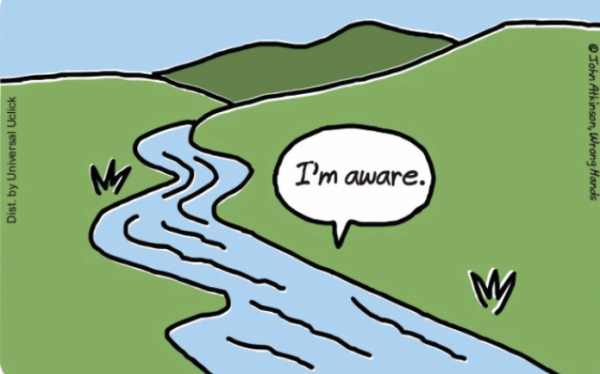Michael Brown’s death is not a race crime
The death of Michael Brown, while tragic and indicative of structural inequalities in modern America, is not an example of a hate crime. To be sure, the use of extreme force by the responding officer was questionable, but there is a difference between excessive use of force against a member of a minority group and deliberate, targeted racism. After all, Brown was implicated in a nearby robbery and there is a reasonable amount of evidence, released by the grand jury, which lends credence to the idea that Brown acted in a threatening manner toward Officer Darren Wilson. Were Brown’s actions violent enough to elicit such a violent response? I’m really not sure, as I wasn’t a witness, but I am skeptical that Brown’s actions necessitated being shot multiple times. Nevertheless, it is also not unreasonable to believe that Wilson was scared, panicked, and in fear of his life. Even if the threat Brown presented wasn’t existential, high-stress situations can often cause people to act rashly, and thus it seems highly likely that Wilson’s response was reasonable if, in hindsight, excessive. This lack of control and panicked response by no means makes Brown’s death acceptable, but it does offer a more persuasive explanation for his death than assertions of racist motivations.
The problem with the narrative of systemic police racism is the limited data set cited by the proponents of this view. To be sure, African Americans and other minorities are imprisoned more frequently and are more likely to be pulled over for minor traffic violations than their white counterparts. However, this is more likely a product of tough drug enforcement laws and structural disadvantages for minorities due to decades of prejudice than of deliberate racist sentiments among police officers. The problem with the idea that white police officers are deliberately targeting and killing African Americans is the cherry-picking of data and lack of large statistical analysis. People point to Eric Garner, Trayvon Martin, and Michael Brown to try to demonstrate large, sweeping trends across a country of 315 million people. Obviously, three individual cases are woefully insufficient to prove a statistically significant trend. However, this exaggerates the paucity of examples. While Brown, Martin, and Garner are the most commonly referenced case studies in the debate about systemic police racism, there have actually been many more African Americans killed at the hands of police. Statistically, 31.17 per 1 million African Americans die at the hands of police. While this is significant, it is still merely .0031 percent of the African American population, hardly indicative of premeditated targeted killings that a supposedly racist police force would be expected to employ. Indeed, an analysis of 33 years of data demonstrates that 44 percent of individuals killed by police were white. While this still demonstrates a disparity, as whites make up about 75 percent of the U.S. population, it certainly doesn’t seem to suggest police going out of their way to kill people due to racist motives. Moreover, 78 percent of individuals shot by African American officers were African American, and it seems unlikely that the majority of African American police officers held racist sentiments toward their own ethnicity. Thus, the weight of evidence seems to suggest that, rather than deliberately targetting African Americans just because of the color of their skin, police are encountering more African Americans in criminal situations due to structural inequities that inherently disadvantage African Americans.
It is a tragic and undeniable reality that African Americans have been mistreated throughout American history. This negatively impacts their socioeconomic position. While there are certainly examples of immensely successful people from minority groups, on balance minorities still fare worse than the average white American. Ultimately, this seems like a much more likely explanation for violence. Structural inequities disadvantage minorities relative to whites, relegating them to lower socioeconomic positions and lower-paying jobs, which results in a large number of minority populations concentrated in lower income, higher crime-level areas. This, in turn, places minorities in greater contact with the police due to their proximity to more nefarious elements of society and to the engagement of some in illegal activities arising in part from a lack of access to the educational opportunities available to the more privileged groups in society. Other factors such as the increasing militarization of police and zealous prosecution of relatively minor crimes also exacerbate the risk of police actions becoming lethal. In fact, political scientist Jessica Weeks recently demonstrated, using large-N datasets, that a more militarized mindset correlates with a greater propensity for violence and force. While this is certainly a worrisome trend for police agencies, it is a phenomenon that occurs irrespective of race. Thus, conflating police militarization with racism is a facile argument that lacks intellectual rigor.
Ultimately, people have a right to be upset at the disproportionate number of arrests and killings of African Americans by police officers in the United States. While institutional racism is no longer in place (having been banished by 13th, 14th, and 15th Amendments as well as , the Civil Rights Act, and the Warren Court), inherent systemic inequities still remain – sad vestiges of a once far more oppressive system. The shooting of Michael Brown and the ensuing debate about racial injustices is vitally important and speaks to problems that absolutely must be combated to make America a more equitable nation. Ferguson demonstrates the inequities in the present system, and the resulting consequence of increased police contact with members of the African American community. However, this is a social inequity left over from a more unfair time that may be addressed by innovative policies like affirmative action and reparations. Michael Brown, in conclusion, was the victim of the remnants of a racist system, not of a racist police officer. His death is a tragedy, not a hate crime.


